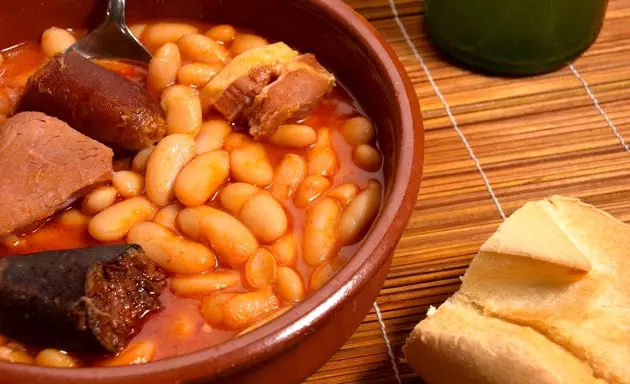
Fabada: the must of the Asturian stove
With a coastline of about 350 kilometres, Asturias is a mountainous region criss-crossed by mighty rivers that have delimited basins with their own gastronomic culture. Village recipes, handed down from generation to generation , have been configuring a rich spoon cuisine and certified Asturian.
BEYOND FABADAS TO LEVITATE star dish, the stew , admits local variants as far as the 'compango' is concerned, such as the fariñón de Candás, native sausage made from blood and cornmeal . Fabes with clams, in vinaigrette, with partridge, with rabbit, with 'pixín' (monkfish) or with spider crab... are just some of the numerous possible variations of this legume with denomination of origin. But going back to the hit, there are fabadas without more and fabadas to levitate and we have found out where to enjoy the latter.
Founded in 1882, Gerard House , in Prendes (9 km from Gijón and 11 km from Avilés), is now run by the fifth generation of the family. Casa Gerardo regulars agree in recommending the restaurant's three classics: the consommé of cream of crabs, the bean stew and the cream of rice with burned milk. The house secret to “lighten” the bean stew without sacrificing its flavor is to cook the compango separately for twenty minutes before adding it to ‘les fabes’. Nevertheless, Mark Moran , "cook before chef", has been put into the kitchen today with the purpose of updating the family tradition with an avant-garde cuisine proposal.
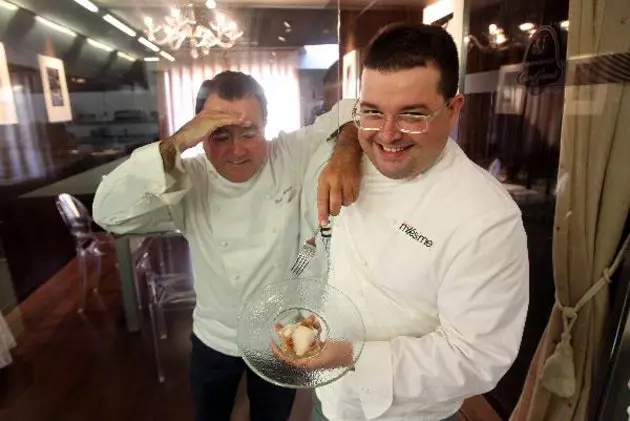
Pedro and Marcos Morán, two generations of chefs at Casa Gerardo
Another “brave and eternal” bean stew is that of La Pondala in Somió (Gijón), a benchmark for Asturian cuisine since 1891. Although its roast beef, Doña Nieves' recipe, fourth family generation, well deserves a paragraph. Fillets of very soft Asturian beef surround the rack of ribs gratin with mashed potatoes and sauced with its own juice.
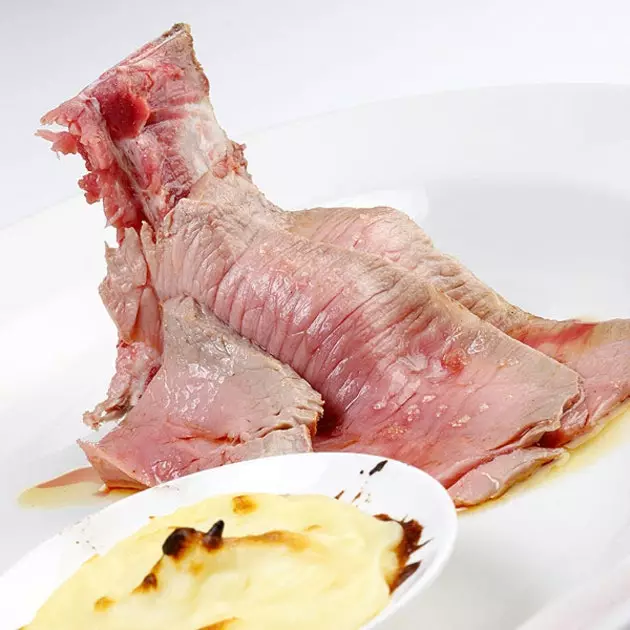
Doña Nieves' famous roast beef, La Pondala
Mino House , nestled in the Somiedo Natural Park, declared a Biosphere Reserve by UNESCO, is another sure hit. His fabada rivals the pot of cabbage. Then you can always lower the 'fartura' through the mountain and hiking trails in the area.
The Eutimio Restaurant also counts among its applauded specialties with the traditional starters of Asturian cuisine: bean stew and pot But the family business has expanded by recovering the lastres canning tradition . Their anchovies They have a waiting list, so those who are impatient can whet their appetites with their red mullet, mushroom and 'oricios' pie.
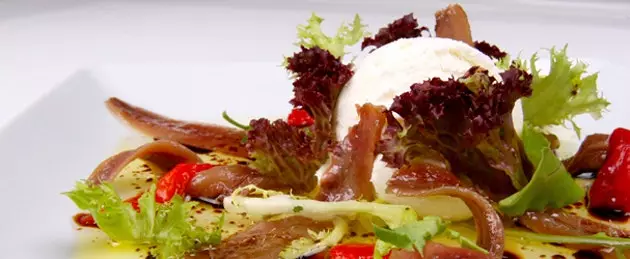
Anchovies from Casa Eutimio: canning tradition
PITU FROM CALEYA, OVER SLOW FIRE Another typically Asturian product is the 'pitu de caleya', which it has nothing to do with conventional chicken . From its birth and until its sale, approximately at twelve months, it feeds on corn, wheat and worms, in a 100% rural environment and in total freedom, which gives a more intense flavor to its red and brown meat.
Gijón annually celebrates its Rice Gastronomic Days with Pitu de Caleya. But there seems to be a consensus that hunting The Mill of Mingo, in Peruyes, It is the best kept secret of that Asturias for 'initiates'. Highways, roads, detours... And after crossing villages, streams and valleys, when the road narrows and you think you've lost your way, you're just on the right track. Soon that old mill, that hórreo and that stable converted into a dining room that make up the typical quintana will appear. Before the delicious 'pitu' with rice, cooked by the two Dulces, mother and daughter, a soft cream of Gamoneu cheese and for dessert 'frixuelos' filled with chocolate or chestnut. The journey will have been worth it!
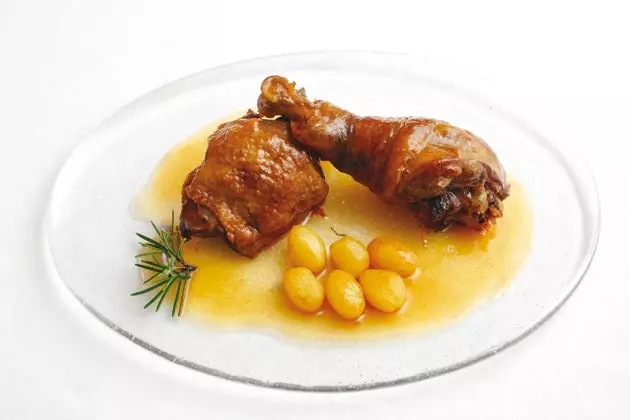
Pitu de caleya
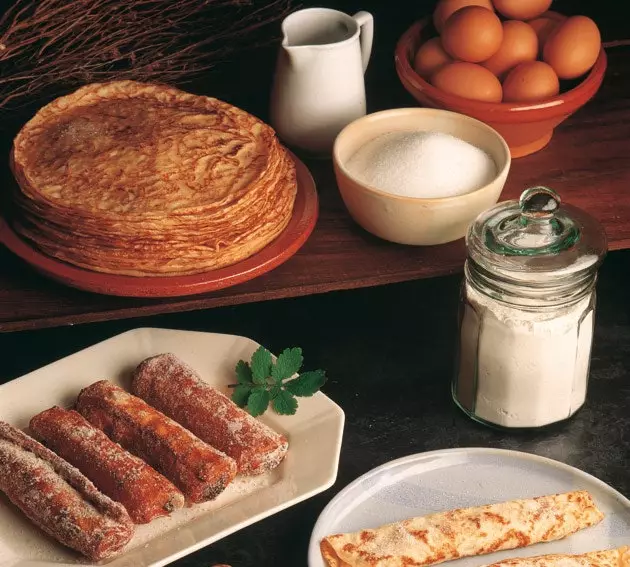
Frixuelos, or crepes, or pancakes... but Asturian style
STUFFED ONIONS, A DELIGHT FROM 'LES CUENQUES' El Entrego has another attractive claim apart from the ** Museum of Mining and Industry . Every November 30, celebrates the Gastronomic Days of Stuffed Onions, declared Festival of Regional Gastronomic Interest. The tradition dates back to the late 1930s, when two local cooks known as "La Conda" and "La Nina" began to prepare the popular dish to celebrate their patron saint, San Andrés. They are still served, delicious, in different restaurants in the area, such as ** La Laguna, Concheso or Casa La Conda.
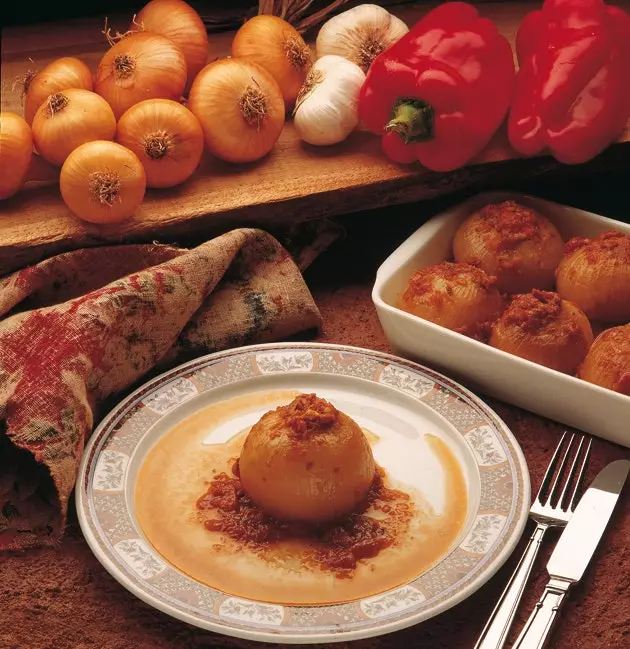
Stuffed onions from Asturias have their own festival
